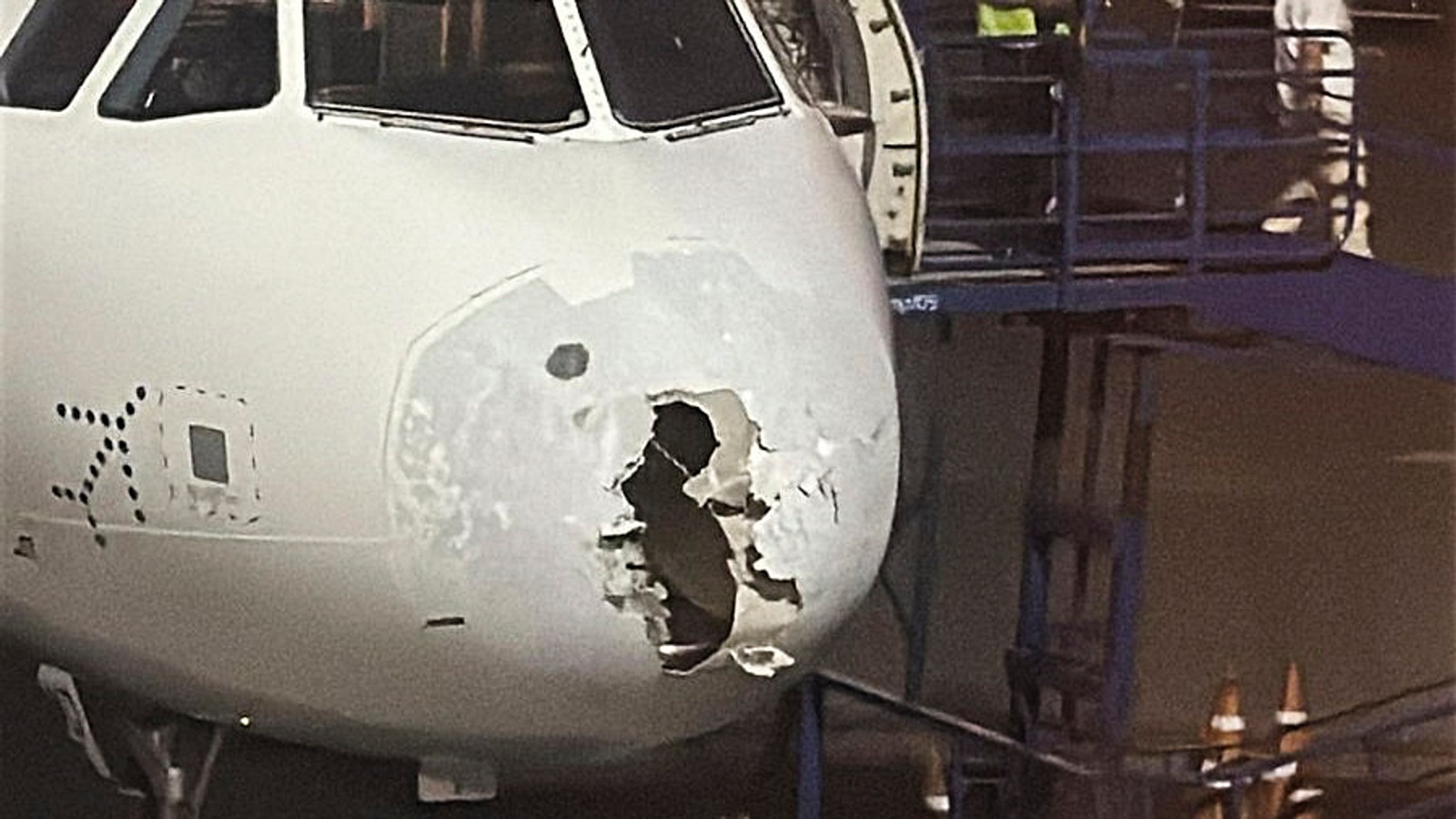The Airbus A321neo aircraft operating the flight with over 220 people on board had hit a severe hailstorm on its way to Srinagar from Delhi on Wednesday, which led to a turbulent few minutes for those on board
The pilots of the IndiGo Delhi-Srinagar flight that hit severe turbulence and hailstorm on Wednesday had requested the Indian Air Force Northern Control for deviation towards the India-Pakistan international border to avoid inclement weather, and later contacted the Lahore air traffic control (ATC) to briefly enter Pakistani airspace – currently a no-go zone for Indian aircraft – to bypass the storm. Both these requests were denied, and the flight crew decided to go through the inclement weather and continue the journey to Srinagar, according to the pilots’ statement to India’s aviation safety regulator, the Directorate General of Civil Aviation (DGCA), which is investigating the incident.
Emails to the Indian Air Force and the Ministry of Defence seeking their comments on the matter did not elicit a response.
“While cruising at FL360 (36,000 feet), aircraft entered hailstorm and severe turbulence near Pathankot. As per crew statement, they requested Northern control (IAF) for deviation towards left (International Border) due to weather on the route, however it was not approved. Later crew contacted Lahore to enter into their airspace to avoid the weather but the same was refused too. Crew initially attempted to return back but as they were close to the thunderstorm cloud, they decided to penetrate the weather. Subsequently, they encountered hailstorm and severe turbulence. Crew chose to continue at same heading to exit the weather by the shortest route towards Srinagar (sic),” the DGCA said on Friday.
In the aftermath of the Pahalgam terror attack, as diplomatic relations between India and Pakistan deteriorated, Pakistan on April 24 shut its airspace to Indian aircraft and Indian airlines for at least a month, banning them from overflying its airspace. In the case of the IndiGo Delhi-Srinagar flight, Lahore ATC did not allow the use of its airspace despite the urgent weather situation that the aircraft was grappling with in view of the airspace closure.
Just saw some scary turbulence visuals of the Indigo Delhi-Srinagar flight and came across this pic tweeted by @sidhant , saw TMC RS MP Nadimul Haque, on checking realised their entire delegation headed to Poonch was indeed on the flight.
Glad to hear that all the passengers and… pic.twitter.com/sQASKyIyz5— Priyanka Chaturvedi🇮🇳 (@priyankac19) May 21, 2025
The Airbus A321neo aircraft operating the flight, 6E 2142, with over 220 people on board had hit a severe hailstorm on its way to Srinagar from Delhi, which led to a turbulent few minutes for those on board. The pilots successfully navigated the storm by flying manually amid wide speed variations and rapid altitude changes, and landed safely at Srinagar airport. While no one on board the aircraft suffered any injury, the aircraft’s nose, which houses the radome, suffered visible significant damage. The radome is an aerodynamic weatherproof fairing that protects the plane’s radar antenna. It is manufactured with materials that allow transmission and reception of the radar radio waves with minimal interference.
According to the pilots’ statement to the aviation safety regulator, the aircraft sounded various technical warnings while navigating the thunderstorm. These included warnings of “angle of attack fault, alternate law protection lost, and backup speed scale unreliable”.
“Due to updraft and down draft encountered by the aircraft, the autopilot tripped and aircraft speed had wide variations. As a result, maximum operating speed/maximum operating mach (VMO/MMO) warnings and repeated stall warnings were triggered. During this period, the aircraft rate of descent reached 8500 fpm (feet per minute). Crew flew the aircraft manually till they exited the hailstorm,” the DGCA said based on the crew’s statement.
Story continues below this ad
After carrying out all checklist actions, the crew declared “PAN-PAN” to Srinagar ATC and requested for radar vectors and made a safe landing, the regulator added. PAN-PAN or a PAN call – short for “possible assistance needed” – is used to communicate an urgent situation, which might require assistance, but is not a life-threatening emergency. Radar vectors are specific navigational headings provided by ATCs to aircraft to guide them along the desired flight path.
“IndiGo flight 6E 2142 from Delhi to Srinagar on May 21 navigated a sudden hailstorm and landed safely at Srinagar International Airport. All customers were attended to upon landing and no injuries were reported. The aircraft is currently undergoing necessary inspection and maintenance in Srinagar and will resume operations once all clearances have been secured. We sincerely thank our customers for their cooperation in ensuring the safe completion of this flight. As always, the safety of our customers and crew remains our highest priority,” IndiGo said in a statement on Thursday night.


